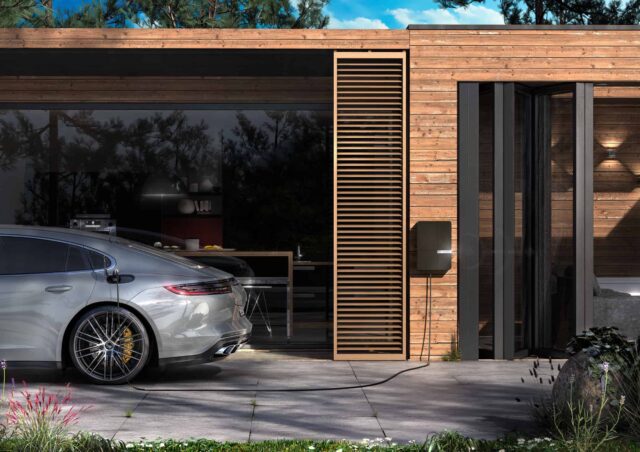by David Watson, Founder and CEO of Ohme
There are seismic changes underway in the automotive world, as the UK gears up to meet its 2030 climate targets. Electric vehicle numbers are going in the right direction – in 9 years, there will be nearly 10 million EVs on Britain’s roads, close to 1 in every 3 cars.
OEMs clearly mean business as Jaguar Land Rover and Ford have already announced that their models will be entirely electric by 2030. However, the journey to electrification is not simply a case of ramping up the numbers of EVs on Britain’s roads. The industry must wake up to the importance of smart tech to make mass adoption possible.
Smart charging, specifically, holds the key to unlocking the EV technology revolution by maximising infrastructure capacity, lowering the cost barrier to adoption, and gathering data on charging patterns and driver behaviour. Without it, Britain’s ability to meet its climate targets hangs in the balance.
How will our infrastructure cope?
Our national grid will struggle to handle such an huge influx of EVs draining its resources, without smart-charging helping us balance the grid. If 10 million EVs plug in at similar times, for example before work in the morning, the unprecedented demand could cause the grid to collapse under the pressure. Ohme’s own calculations show that if numbers of this scale plug in at once using dumb chargers, this could add 70 GW to peak demand. Even if just 30% of these owners plugged in using dumb chargers, it would add 21 GW to peak power requirement – a 33% increase in the power required.
By using smart charging technology, we can prevent such a surge by shifting EV technology demand by time and location to ensure the grid isn’t overwhelmed, allowing electricity to be consumed effectively and sustainably.
At the same time, this smart tech solves the problem of managing renewable energy surplus. At the moment, the industry struggles to harvest and store excess wind power, for example, when demand is low and supply is high – when the wind blows and we’re asleep.
The bottom line is that we can’t afford wastage when confronted with such ambitious climate targets. Today, the industry’s solution to this problem is huge, expensive investment in infrastructure – namely megabatteries, backup generation capacity and grid reinforcements. But by using smarter technology, we can achieve the same goal, without the cost. Smart charging enables drivers to draw surplus energy from the grid into their EV batteries at off peak times, turning the car batteries themselves into the perfect storage solution – effectively utilising our natural resources at all times of the day.
Affordability is key
We will never remove ICEs from Britain’s roads unless we can demonstrate that switching to electric doesn’t have to cost the earth. And while the cost of buying an EV might be falling as more affordable models come on to the market, for many, EV ownership still remains out of reach. Bringing down the running costs of EVs through smart-charging will be critical if EVs are to become mainstream, particularly in a post-pandemic economy.
Smart charging solutions allow consumers to tap into cheap energy by identifying the best times to charge. In fact, in some cases when there is surplus energy on the grid from renewables, drivers can even get paid to charge their vehicles, dramatically reducing running costs over time.
EV owners can additionally unlock a short-cut to huge savings by combining a smart-charging app like Ohme’s with a time-of-use (TOU) tariff. For example, using the two together brings the approximate cost of driving 10,000 miles down by £280 annually for Nissan Leaf drivers, and by a jaw-dropping £350 for Tesla X drivers.
Joining the dots with data
Smart-charging does not only protect the grid and benefit consumers, it can also help energy suppliers. Smart-charging technologies deliver the ability to ‘connect and control’ the nation’s charging infrastructure – providing the data for energy companies to be able to direct power to where it’s needed, when it’s needed.
Smart charging also provides an invaluable connection between energy companies and energy consumers, unlocking the data that will help them better serve their customers by understanding their behaviours. By working with smart charging data platforms, OEMs can unlock powerful insights into driver behaviour. This powerful insight can also shape an OEM’s strategy from vehicle design right through to add-on services such as insurance and after-sales care.
Data is key here – it allows us to build a smart, networked system which is able to manage large fluctuations in energy supply and demand whilst providing powerful insights to help both energy companies and OEMs shape their service offers.
The time is now
The industry is laser focused on production, but the EV revolution can’t be realised in Britain without the right tech to support it. The answer to breaking down the barriers to mass adoption is staring us in the face – smart-charging technologies.
Smart tech improves affordability, protects and preserves our infrastructure, and joins the dots between EV stakeholders. It’s a triple win for EV owners, energy companies and car manufacturers, and its adoption at scale will see us well on our way to meeting our 2030 climate targets.











